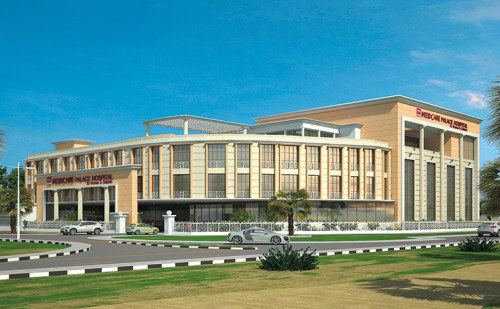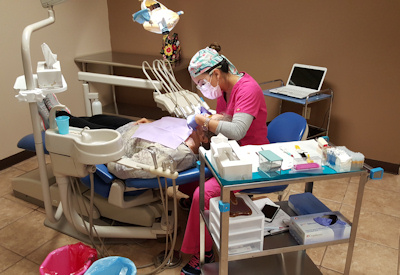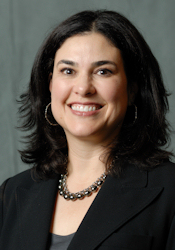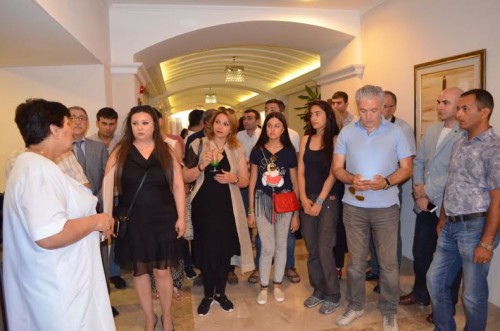
Medcare Palace Hospital, Dubai. Image courtesy of Aster.
The U.S. is currently the largest outbound market for medical tourism with around 2.5 million patients travelling abroad at an estimated spend of $35 billion for medical services. After the U.S., the highest number of outbound medical tourists comes from Russia and other CIS countries and the MENA region (with the GCC contributing 70-80%). Southeast Asia is the largest region for global inbound medical tourism, followed by India, Mexico, Turkey, Jordan and Hungary.
Travel for health is both region-specific and health-service-specific depending on the exact need. Countries such as the U.S., Germany, Singapore and India receive patients for specialties such as orthopedics, oncology, organ transplants and cardiology, where decisions are driven by quality and value-based care. Meanwhile, countries like Thailand, Turkey, Hungary and Mexico receive patients for minor elective treatments such as cosmetic surgeries, ophthalmology, hair transplants and health checkups, where the price of services, proximity and the attractiveness of the destination play an important role.
Dubai is making an ambitious bid to establish itself as a leading medical tourism destination, with the number of inbound medical tourists from outside of the U.A.E. growing to approximately 300,000 in 2015 from approximately 107,000 in 2012. A number of patients from the MENA region, CIS countries, Russia and parts of Africa, come to Dubai for a wide range of specialized health services, the most popular of which include orthopedics, ophthalmology, dental care and check-ups.
Dubai has significant potential to grow its inbound medical tourism and further penetrate the GCC region and African continent, given its close proximity and connectivity, cultural affinity, attractiveness as a tourism destination and growing perception as a high-quality healthcare services hub. Specifically, Dubai’s investment in private healthcare enables the emergence of highly differentiated and specialized services, and the recruitment of reputable clinical operators that conform to the highest of standards, thereby raising the overall quality of healthcare. Nevertheless, other key issues within the health industry need to be addressed.
For one, there needs to be stability and continuous improvement in health regulations in line with internationally-established medical practices of the highest caliber. In particular, a focus on streamlining licensing and accreditation policies and standards across various regulatory bodies such as DHCC, DHA, and MOH is essential. Not only will this drive investments and attract credible, first-class healthcare providers and clinical operators, but it will also amplify the perception of Dubai’s position as a medical tourism destination at the global level.
Given the global shortage of skilled healthcare professionals, almost all GCC countries have demonstrated a concern for supporting and improving healthcare education. The GCC countries are currently going through major labor reforms to reduce the dependence on expatriates by establishing more education facilities, while also supporting and funding the education of students abroad in healthcare specializations. Dubai could lead this initiative by supporting investments, thereby establishing its reputation as the healthcare education hub of the GCC. Countries with already well-developed health systems and with reputed centers of excellence, such as Singapore and Germany, and those who have succeeded in receiving sizeable volumes of medical tourists, such as Turkey, Germany, Czech Republic, Thailand and Hungary, have done this on the strength of well-developed healthcare education systems and a large pool of local healthcare talent. Investing in a local pool of healthcare talent is vital for bridging the talent gap, which let alone would boost job opportunities among GCC nationals. One approach to accomplish this aim would be setting up universities through strategic alliances with well-renowned foreign universities. Another approach could be to support investments in academic programs and medical colleges and university hospitals through Public Private Partnerships, where the strengths of the private sector can be leveraged to improve and enhance health education infrastructure.
Clinical research is an integral part of any developed healthcare system. To improve healthcare standards and quality of clinical talent, it is important that GCC countries invest and support medical research programs that could help combat the burden of chronic diseases and improve healthcare services to the patient population. Such an initiative will attract leading surgeons to establish a base in Dubai because it allows for comfortable latitude between practicing and research. Greater focus and allocation of funds to research could improve medical outcomes, support centers of excellence that require research-backed programs, as well as drive innovation and investment in the healthcare sector.
Legislation is also required on standardizing procedures of data recording and reporting to ensure accuracy in published health information. Developed countries including the U.K., U.S., Germany and Singapore, have implemented continuous monitoring systems to regulate the standardization of data reporting. Having electronic health records and informatics should improve quality of patient outcomes, transparency and efficiency in the health system, enable the use of digital applications and solutions in providing a comprehensive model of care, and enable the real time availability of reliable health statistics and patient records.
Introducing a centralized hospital-ranking system in the GCC countries could raise the bar for hospitals and encourage competition that will lead to improvements in efficiency and quality. The health authorities in the U.S. (CMS) implemented a similar rating system, related to patients’ experience of care at almost 3,500 acute-care hospitals across the country. The aim was to make it easier for consumers to choose a hospital, understand the quality of care they deliver and enhance the healthcare system to deliver better care, ultimately resulting in a healthier population. Not only did this increase consumer awareness, but it also encouraged hospitals and clinicians to continuously improve quality of care delivered to patients. DHA has announced plans for introducing a ranking system for hospitals and services to create international standards in medical tourism. The criteria will also include the performance, qualification and experience of doctors. These are expected to be publically available and the initiative would assist patients to independently choose the service, staff and facility accordingly.
With improvements in regulations and licensing standards, support to develop the health eco-system with investments in medical education, clinical research and health informatics, Dubai is clearly well positioned, given its strong and credible tourism brand, to become a leading medical tourism destination. Investments in dedicated freezones, such as Dubai Healthcare City and pockets of excellence and high-quality medical services across the emirate, mean that Dubai is well equipped to continue on its growth trajectory with the right investments in the health eco-system.
source: http://www.forbesmiddleeast.com / Forbes Middle East / Home> Special Editions – Healthcare / by Ahmed Fayaz / August 14th, 2016






